List of kigo
This is a list of kigo, which are words or phrases that are associated with a particular season in Japanese poetry. They provide an economy of expression that is especially valuable in the very short haiku, as well as the longer linked-verse forms renku and renga, to indicate the season referenced in the poem or stanza.
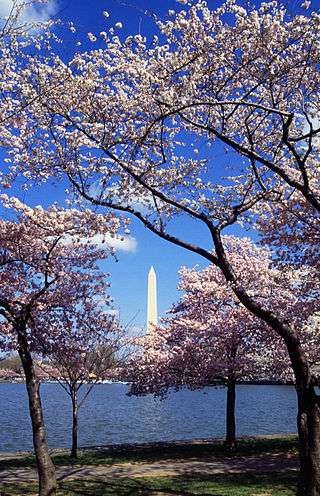
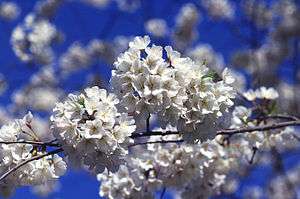
Japanese seasons
Until 1873, in the Japanese calendar, seasons traditionally followed the lunisolar calendar with the solstices and equinoxes at the middle of a season. The traditional Japanese seasons are:
- Spring: 4 February—5 May
- Summer: 6 May—7 August
- Autumn: 8 August—6 November
- Winter: 7 November—3 February
For kigo, each season is then divided into early, mid-, and late periods. For spring, these would be:
- Early spring: 4 February—5 March (February)
- Mid-spring: 6 March—4 April (March)
- Late spring: 5 April—5 May (April)
Saijiki and kiyose
Japanese haiku poets often use a saijiki, a book like a dictionary or almanac for kigo. An entry in a saijiki usually includes a description of the kigo itself, as well as a list of similar or related words, and a few examples of haiku that include that kigo. A kiyose is similar, but contains only lists of kigo. Modern saijiki and kiyose are divided into the four seasons and New Year, with some containing a further section for seasonless (muki) topics. Each section is divided into a standard set of categories, each containing the relevant kigo. The most common categories are:
- The season
- The earth
- Humanity
- Observances
- Animals
- Plants
This is a list of both Japanese and non-Japanese kigo. If the kigo is a Japanese word, or if there is a Japanese translation in parentheses next to the English kigo, then the kigo can be found in most major Japanese saijiki.
[note: An asterisk (*) after the Japanese name for the kigo denotes an external link to a saijiki entry for the kigo with example haiku that is part of the "Japanese haiku: a topical dictionary" website.]
Spring: 4 February—5 May
The season
- spring (haru) - the name of season is a kigo or season word. Other combinations are spring begins (Haru tatsu), signs of spring (haru meku), sea in the spring (haru no umi), spring being gone (Yuku haru). spring higan (春彼岸, haru higan).
- February (kisaragi or nigatsu), March (yayoi or sangatsu) and April (uzuki or shigatsu). The third month (sangatsu) in the Japanese calendar is equivalent roughly to the April in the Gregorian calendar, therefore end of March (sangatsujin) is equal to end of spring (haru no hate).
- warm (atatakashi or nurumu) - all spring - as the weather changes from the cold of winter, any warming is noticed. Also water becomes warm (mizu nurumu).
- spring mist or spring haze (kasumi) - all spring - the daytime haze of spring. The nighttime haze during spring that can obscure the moon is called oboro. Haruichiban, the first strong southerly wind of the spring is used as a kigo in modern haiku.
Observances
- Hanamatsuri (Blossom Festival), Buddhist festival celebrating the birth of Buddha, on 8 April.
- Hinamatsuri (Girl's Day) Doll Festival and Hina (doll) - a traditional Japanese festival for girls on 3 March.
Animals
- frogs (kawazu) - all spring (February–April) - noted for their loud singing
- skylarks (hibari) - all spring - noted for their songs in flight, swallows (tsubame) mid-spring, twittering (saezuri) - all spring - the chirping of songbirds
- uguisu (鶯, Japanese bush warbler (sometimes translated as Japanese nightingale), Cettia diphone) - early spring - the bird is used as an example of sweet sounds. Uguisu were mentioned in the preface to the Kokin Wakashū. It is often associated with ume blossoms and new growth in early Japanese waka and is regarded as a harbinger of spring (春告鳥, harutsugedori, literary "bird which announces the arrival of Spring").

- whale watching - In different areas the number of whales off the coast peak at different times of the year. For Japan, whales (kujira) are most often seen during the winter.
Plants
- ume blossom - early spring
- sakura (cherry blossoms) and cherry blossom-viewing (hanami) - late spring (April) - for the Japanese, cherry blossoms are such a common topic that in just mentioning blossoms (hana) in haiku it is assumed they are cherry blossoms. Blossom-viewing is an occasion for partying with friends or coworkers.
- wildflowers.
Summer: 6 May—7 August
The season
- dog days
- midsummer
- summer (natsu); other combinations are summer has come (natsu kinu), end of summer (natsu no hate). summer holidays (natsu yasumi) means mainly the school holiday.
- May (satsuki or gogatsu), June (minazuki or rokugatsu), July (fumizuki or fuzuki)
- hot (atsushi), hotness (atsusa) and hot day (atsuki hi); also, anything related to the heat, including sweat (ase) and in contemporary haiku, air conditioning (reibō)
The sky and heavens
- the Pleiades at dawn (subaru)
- rainy season (tsuyu) - the Japanese rainy season, usually starting in mid-June, also rainbow (niji)
- smog (sumoggu)
- sunset
The earth
- summer field or summer meadow (i.e. the abundance of summer wildflowers)
- waterfall (taki)

Humanity
- nap or siesta (hirune)
- nudity
- summer sports: surfing, beach volleyball, rollerblading and skateboarding
- sushi
- sunbathing
- swimming pool
Observances

- A-Bomb Anniversary (6 August)
- Tango no sekku traditional festival for boys on 5 May. See Hinamatsuri in spring for the girls' festival. Festival (matsuri) is applied to summer festivals of Shintoism for purification. Traditionally it meant the festival of Kamo Shrine in Kyoto, however as kigo it can be applied to each local Shinto festival.
Animals

- cicada (semi) - late summer (July) - known for their cries
- hototogisu (little cuckoo - C. poliocephalis) - all summer (May–July) - the hototogisu is a bird in the cuckoo family noted for its song
- jellyfish (kurage)
- mosquito (ka)
- snakes (hebi)
Plants
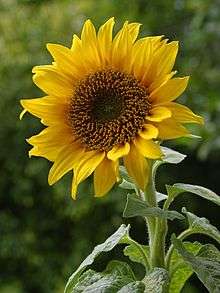
- lily
- lotus flower (hasu or hachisu)
- orange blossoms
- sunflower
- wisteria (fuji), hana tachibana (wild orange blossoms) and iris (ayame or hanashoubu) - early summer (May), water lily (suiren) - mid and late summer.
Autumn: 8 August—6 November
The season
- autumn (aki); other combinations are autumn has come (aki kinu), autumn is ending (aki hatsu), autumn being gone (yuku aki).
- August (hazuki or hachigazu), September (nagatsuki or kugatsu) and October (jūgatsu or kamnazuki). end of September (kugatsujin), end of autumn (aki no hate).
The sky and heavens
- Milky Way (amanogawa. lit. "river of heaven"), because in the autumn it is most visible in Japan. It is associated with Tanabata.
- moon (tsuki) - all autumn (August–October), and moon-viewing (tsukimi) mid-autumn (September) - the word "moon" by itself is assumed to be a full moon in autumn. Moon-viewing and leaf-viewing in autumn are common group activities in Japan.
- typhoon (taifu or nowaki), thunder (kaminari)
Humanity

- scarecrow (kakashi), rice cropping (inekari) - rice harvest and relevant things are significant for Japanese life.
Observances
- Tanabata (the festival of the weaver maiden and the herdsman in the Heavenly Court), grave-visiting (haka mairi), and Bon Festival (ancestors' spirits come home to share the ceremonial and festival time with descendant family, urabon-e) - all early autumn (August) - are kigo as well as associated ornaments and activities like small bonfires called mukae-bi (welcome-fire for ancestors' spirits) and folk dancing (bon odori), among other things. Though the date of Tanabata is 7th day of the 7th month of the Japanese calendar, therefore in August of the Gregorian one, today in many places it is celebrated on 7 July, hence there is a dispute as to whether Tanabata is much fit to be treated as a summer kigo.
Animals
- insects (mushi), mainly it implies singing one. Also crickets (kōrogi) - all autumn (August–October) - noted for the singing of the males.
Plants
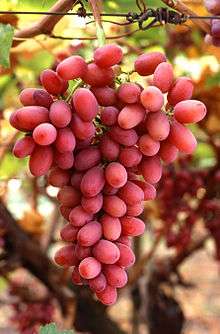
- nashi pear (梨 nashi), Chaenomeles (boke no mi), peach (momo), persimmon (kaki), apples (ringo) and grapes (budō) are examples of fruit that are used as autumn kigo.
- colored leaves (momiji) - late autumn (October) - a very common topic for haiku along with related topics such as first colored leaves (hatsu momiji) mid-autumn, shining leaves (teri momiji) late autumn, leaves turning color (usumomiji) mid-autumn, leaves start to fall (momiji katsu chiru) late autumn. Leaf-viewing (momijigari) is a common group activity.
Winter: 7 November—3 February
The season
- winter (fuyu), using "winter" in a haiku adds a sense of chilliness (literally and figuratively), bleakness, and seclusion to the poem.
- November (shimotsuki or jūichigatsu), December (shiwasu or jūnigatsu) and January (mutsuki or ichigatsu)
- cold (samushi) and coldness (samusa).
The sky and heavens
- smog (sumoggu) -inversion layers help concentrate the smog over a city during the winter
Humanity
- snow-viewing (yukimi) - late winter (January) - a popular group activity in Japan. Also first snow (hatsu yuki) mid-winter, snow (yuki) late winter, and ice (kōri) late winter.
- fugu soup (fugujiru), Anglerfish or sea-devil stew (ankō nabe), oyster (kaki) - seasonal dishes.
- calendar vendor (koyomiuri) - preparation for the new year.
Observances
- Christmas - this is a modern kigo. It wasn't used in the Edo period, when Christianity was forbidden.
- New Year's Eve (ōmisoka or toshi no yo, literary "the end of year"), and the New Year's Eve party (toshiwasure).
- Kan (kan), days from 5 January (or 6) till 4 February (or 5) (literally coldness) - derived originally from the Chinese 24 seasonal periods. Also daikan (great coldness) a day around 20 January, or beginning of kan season (kan no iri, 5 or 6 January).
Plants
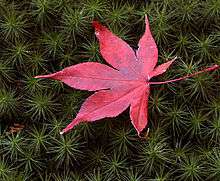
- fallen leaves (ochiba) and dry leaves (kareha) - all winter (November–January) - just as colored leaves are a clear sign of autumn, fallen leaves are a sign of winter.
New Year
This group of kigo is a modern invention. Before Japan began using the Gregorian calendar in 1873, the Japanese New Year was at the beginning of spring.
The season
- Japanese New Year (正月 shōgatsu) * As in many other cultures, the Japanese New Year is an important time of year for celebrations and there are many activities associated with it that may be mentioned in haiku, including some "firsts": first sun (hatsuhi), first laughter ( hatsuwarai or waraizome), and first calligraphy (kakizome). There is also New Year's Day (ganjitsu).
- Each day of first week of the new year is treated as kigo, such as the seventh day of the new year (nanoka, literally just the seventh day).
Humanity
- New Year's Day customs: kadomatsu * (a traditional decoration usually made of pine and bamboo that is placed on the gate or outer doorway), otoshidama (the custom of giving pocket money to children), toso (a ritual mulled sake only drunk on New Year's Day).
- osechi (traditional Japanese New Year's Day food): zōni * (a traditional vegetable broth with mochi—sticky rice cakes), seven herbs (nanakusa) and rice porridge with seven herbs (nanakusa gayu), eaten in the evening of 7 January.
Animals
- first sparrow (hatsu-suzume) * - the first sparrow helps welcome the new year.
See also
Helpful lists of species
Birds
Sources
- 『入門歳時記』大野林火監修、俳句文学館編。角川書店 、ISBN 4-04-063000-9. [Title: "Introductory Saijiki", editor: "Ōno Rinka", Publisher: Kadokawa Shoten ]
- Haiku World: An International Poetry Almanac by William J. Higginson, Kodansha International © 1996 ISBN 4-7700-2090-2 (An international haiku saijiki with over 1,000 haiku and senryu from poets in 50 countries covering 680 seasonal topics)
- The Haiku Seasons: Poetry of the Natural World by William J. Higginson, Kodansha International © 1996 ISBN 4-7700-1629-8 (a companion book to Haiku World discussing the development of haiku, and the importance of the seasons and kigo to haiku)
External links
- The five hundred essential Japanese season words Selected by Kenkichi Yamamoto and translated by William J. Higginson and Kris Young Kondo
- The Traditional Seasons of Japanese Poetry by William J. Higginson
- Japanese Haiku - a Topical Dictionary at the Univ. of Virginia Japanese Text Initiative a work-in-progress based on the Nyu-mon Saijiki by the Museum of Haiku Literature in Tokyo, most translations by William J. Higginson and Lewis Cook
- The Yuki Teikei Haiku Season Word List from the Yuki Teikei Haiku Society (Northern California)
- World Kigo Database Gabi Greve's project supported by the World Haiku Club
- A Dictionary of Haiku - Classified by Season Words with Traditional and Modern Methods by Jane Reichhold
- Haiku in Twelve Months at the Kiyoshi Memorial Museum (Takahama Kyoshi)
- Season words from the Shiki mailing list kukai